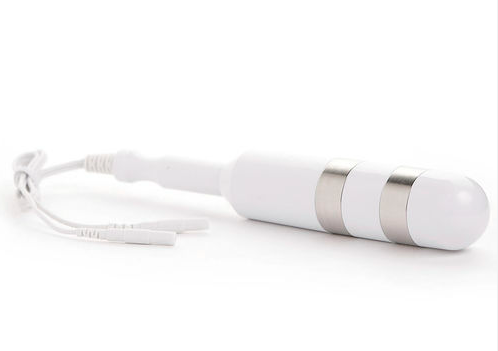Vaginal microbiome: does electrical stimulation help?
A healthy vaginal microbiome is generally reflected by lots of Lactobacilli.
Lactobacilli should hold the most real estate in the vaginal microbiome. Monopoly by Lactobacilli = healthy vagina! Well, buckle up, it’s time for a dive into the research to find out if the vaginal microbiome can be improved by electrical stimulation!
Vaginal electrical stimulation is a treatment used commonly by pelvic physiotherapists.
Electrical stimulation with a vaginal probe is used to help women with pelvic floor dysfunction (such as incontinence, urgency or weak pelvic floor) or pelvic pain. This 2022 study included 134 women visiting their gynaecologist for exactly these problems: pelvic floor dysfunction (PFD) or pelvic pain. 9 of them had just one session (short-term) and a whopping 111 had 7 sessions of vaginal electrical stimulation (ES) – called the “long-term” group. There was also a control group of 14 healthy women who were given short-term vaginal ES. This means the short-term group was made up of a mix of subjects: healthy, asymptomatic and those with pelvic floor dysfunction (PFD).
Now take note; we need to talk about study design. This was not a controlled study (the “gold standard” in research looking at treatments), but rather a longitudinal study. A longitudinal study has the advantage that it looks at change over time, so it has a better chance of hinting at an effect. But because so many variables remain uncontrolled, we can’t get a good idea of cause-effect from this study. Another weakness of the study is that it used 16SrRNA technology, rather than the more precise shotgun metagenomics. This means we can only really trust the genus-level information – that is, the relative abundance of Lactobacillus, and not the more detailed breakdown into different species of Lactobacillus like L. crispatus, L. iners, L. gasseri. This is a shame, because there is a strong body of evidence showing the differing health outcomes of vaginal dominance of L. crispatus vs L. iners.
Using accurate metagenomic testing is important in any microbiome research.
The long-term group, made up entirely of subjects with PFD, had lower baseline Lactobacillus levels in the vagina than the short-term, and hence a greater diversity (which is a less healthy picture). This is not explained by age, as both groups were the same age. However, we have no idea of their reproductive status and how this may have differed from the long-term group. Were they postpartum? Breastfeeding? On the Pill? All these things impact the vaginal microbiome. The authors note that the greater diversity was associated with the presence of PFD “or the postpartum state” without reporting specific statistics for this association.
The study showed differences in Lactobacilli in the long-term electrical stimulation group, but read on…
In the long-term group (who had 7 sessions), Lactobacilli were higher in the vaginal microbiome by the end. Unfriendly vaginal bacteria such as Gardnerella and Atopobium (common in bacterial vaginosis, or BV) and Streptococcus, did not change. But was this really the effect of the ES? We have no idea if this group stopped breastfeeding (which leads to an increase in Lactobacilli). We don’t even know how long postpartum they were. Unfortunately, the authors don’t tell us any of this.
A single 30” session of vaginal ES showed no statistically significant change in vaginal bacterial taxa (e.g. Lactobacilli). The long-term group received 7×20” sessions of vaginal ES followed by 10” of biofeedback-assisted pelvic floor exercises every 4 days – by my calculations, it was a 25-day duration. It is a shame they didn’t re-test the short-term ES group on day 25 to help distinguish a “true” effect of the ES from the natural history of the postpartum vaginal microbiome. The longer a woman is postpartum or post-breastfeeding, the more the return to a Lactobacillus-dominant vagina would be expected. There is even a possibility that the simple introduction of a biofeedback probe, and/or the lubricant used, was responsible for the changes. There are just too many variables here to take much from the microbiome results.
Interestingly though, in the long-term group there were statistically significant reductions in vaginal cytokines, including interferon-gamma, TNF-alpha and numerous interleukins (though not IL-6).
The study showed reduced inflammation in the vagina in the group that had the long-term vaginal electrical stimulation.
This was not reproduced in the single-session group; in fact, IL-6 actually significantly (but only slightly) increased. What does this mean? Because this was not a controlled study, there are numerous variables that could have been responsible for the change in vaginal cytokines over time in the group that received 7 sessions. These include breastfeeding status, hormonal status including use of contraceptives, and even the presence of thrush, which they do not report ruling out. So, we can’t really draw any conclusions about an effect of vaginal ES per se.
The final point I’d like to make is on the parameters used for the vaginal electrical stimulation. 50 Hz sounds alarmingly high to me, and they appeared to apply this as 1 sec on, 1 sec off. Even though it was “intensity as tolerated”, I expect this would have been uncomfortable, and was a bit suspicious that there was no reporting on adverse effects.
So does vaginal electrical stimulation affect the vaginal microbiome? After this study, we still don’t know. But it certainly opens up an avenue for further research. It also might help put the vaginal microbiome on the road map for physiotherapists to consider as a possible health outcome affected by their treatment.

